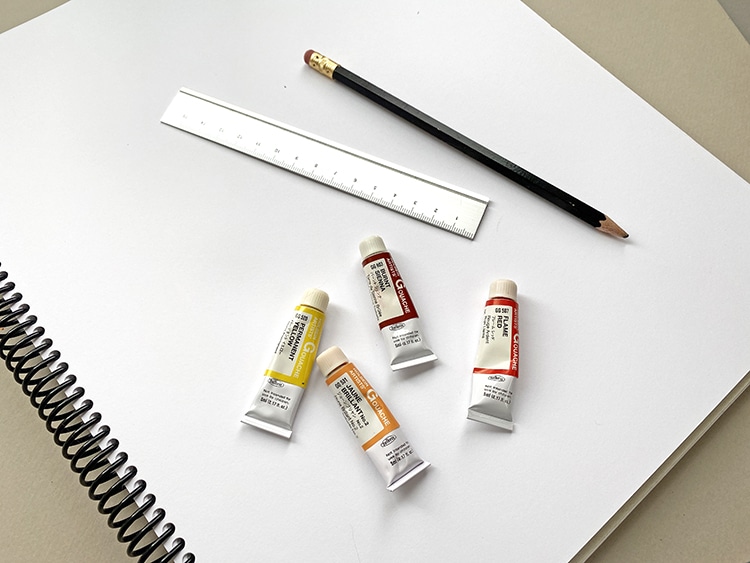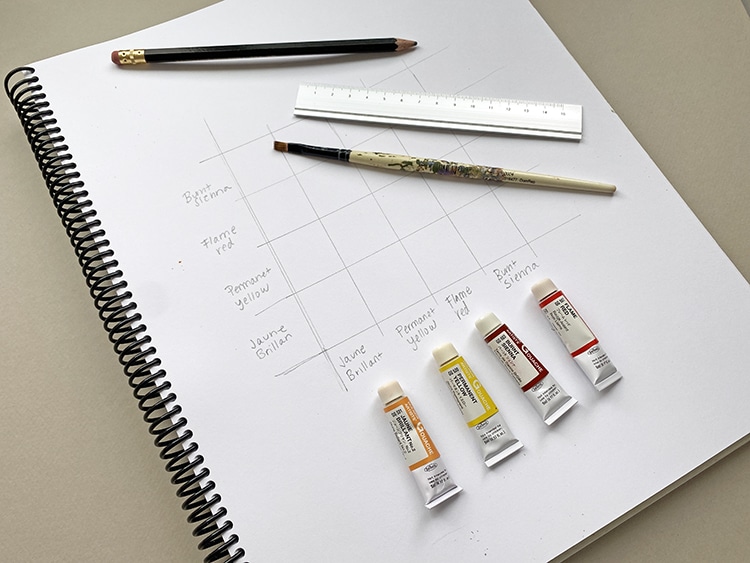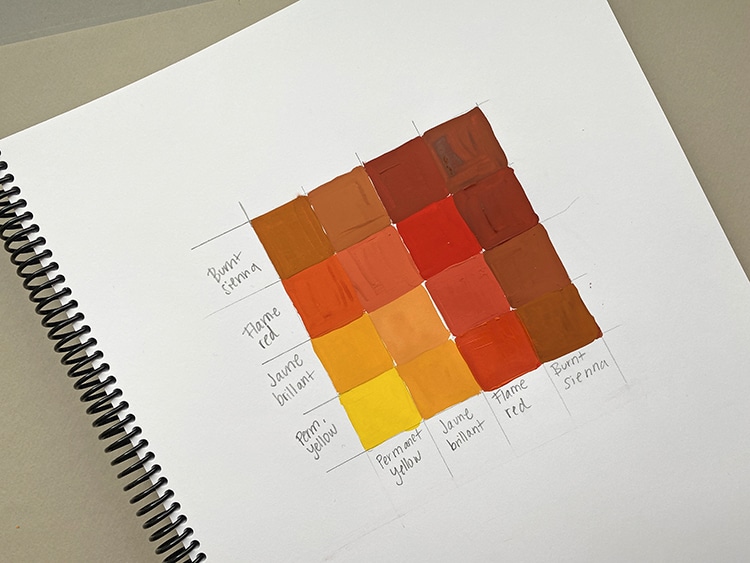
Photo: Carissa Weiser
Cultivating a specific artistic style is as unique to you as the way you speak. When building a body of work that people recognize as your own, employing a similar color palette is one way to do it. Doing so will help create a cohesive body of work. If you want to take some of the guesswork out of your hues—and you work with analog media such as paints or colored pencils—try making a color mixing chart.
A color chart is created using all of the hues in your palette. Each color is mixed with one another and that is then recorded in a quadrant alongside all of the other hues. When complete, you’ll have a customized reference tool that will show every mixing combination possible.
Scroll down for a tutorial on how to make your color chart.
How to Make a Color Chart
If you’ve got an extra sheet of paper, a straight edge, and your palette of choice, you can make a color chart. Here’s how.
Step 1: Grab your pigments.

Photo: Sara Barnes / My Modern Met
These can be paints, colored pencils, blendable markers—any medium in which you’d like to create a color chart.
Step 2: Create a quadrant using a pencil and a ruler.

Photo: Sara Barnes / My Modern Met
Here’s where you’ll create the chart that you’ll color. Begin by getting a sheet of paper that’s appropriate for your hues. (If you’re mixing watercolor, for instance, grab a sheet of watercolor paper.)
Using a straight edge and a pencil, draw the chart on the paper keeping the number of rows and columns the same. You can make it as large as you like, but to not overwhelm yourself, think about starting small. If you begin, for instance, with four colors, you’ll create four rows and four columns for a total of 16 squares. But, if you have more hues and want to go larger, you can do that too; it’s just more squares.
Once you’ve got all of your squares drawn, label each color on its own box on every row and column.
Step 3: Start coloring.

Photo: Sara Barnes / My Modern Met
Here’s where the fun begins; you’ll start recording all of your hues! Fill in each color combination where they meet on the chart. Assume that you’re adding a one-to-one hue ratio. If it’s any different, be sure to note that on your chart.
When complete, the chart will reveal each color combination and is a reference for your future works.
Why Make a Color Chart?
If the idea of making a color chart doesn’t appeal to you, you should know that there are good reasons to do this exercise. Doing it allows you to mix all of your colors, and it will give you vital information on what you’re mixing and how it looks. It will take some of the guesswork out of your hues, which can save you valuable time in the future and even prevent you from mixing the wrong color.
A color chart is not media-specific. You can make one using paints, colored pencils, or blendable markers—whatever medium you use can likely be a color chart. And you don’t have to start with a massive collection of colors. As we’ve shown you, just a few colors can make an illuminating chart.
Related Articles:
Curious About Color Mixing? Here Are the Basics You Need to Know
Unearth the Colorful History of Paint: From Natural Pigments to Synthetic Hues
4 Color Theory Exercises That Are an Easy Way To Improve Your Painting Skills
